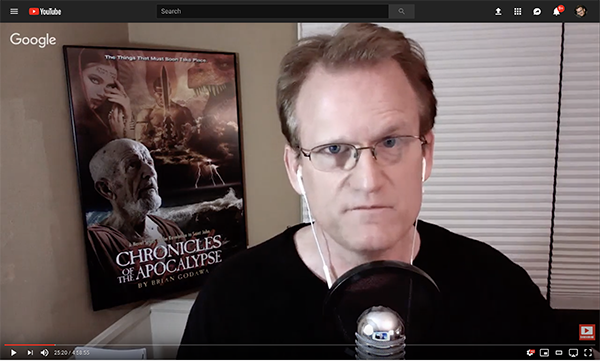
And then shall appear the sign of the Son of man in heaven: and then shall all the tribes of the earth mourn, and they shall see the Son of Man coming on the clouds of heaven with power and great glory.
Matthew 24:30
In the early years of my Christian faith, I assumed, like so many of my brethren, that Matthew 24:30 was a prophecy about the second coming of Christ in our future. The picture was one of Christ on his white horse surfing in on a cumulus nimbus up in the troposphere down to the earth below, because after all, we must take the Bible “literally,” right? It seemed obvious to my modern western scientific mindset.
Until I began to look into the ancient Jewish mindset and discovered that this terminology of Christ’s cloud-coming was a common word-picture with a tradition of very symbolic meaning that had precedent in the Old Testament.
And that biblical meaning was very different from what I had been taught.
Back to the Bible: This Generation
The first thing that caused cognitive dissonance in my “literalistic” interpretation of Christ’s cloud-coming was the actual context of Jesus’ prophecy. The cloud-coming was to be part of an entire sequence of events that Jesus began to explain in Matthew 23.
He condemned his generation of Jews and their leaders for rejecting his messianic identity. Jesus said those of his generation who were rejecting his messiahshipwould be guilty of all the blood of righteous prophets shed in the land of Israel from Abel unto their very day (Matt 23:35).
Then he says, “Truly, I say to you, all these things will come upon this generation” (23:36).
I discovered that every time Jesus used that phrase, “this generation,” he always used it to refer to the generation of people who were alive in his day, not to some future generation, as some Christians try to argue. Don’t trust prophecy pundits. Look it up for yourself like I did (Matt 11:16-19; 12:41-42; 12:45; 17:17; Luke 11:29; Mark 8:38).
And when you read those passages, you’ll notice like I did that Jesus always used “this generation” in a negative way to refer to his first-century generation being spiritually adulterous for rejecting him as the coming Messiah. They were rejecting God’s own “visitation” (Luke 19:41-44).
Remember Moses’ generation of Jews in the wilderness being judged for forty years for not believing the spies of Canaan? Same thing. Jesus was comparing his generation of unbelieving Jews to that unbelieving generation.
And the Lord’s anger was kindled against Israel, and he made them wander in the wilderness forty years, until all the generation that had done evil in the sight of the Lordwas gone.
Numbers 32:13
Just like Moses’ generation were judged in forty years, so Jesus’ generation would be judged in forty years. But what things would come upon the contemporaries of Christ? Contextually, it included the destruction of the temple in Jerusalem (Matt 23:37-24:2), as well as persecution of Christians (24:9), the abomination of desolation (v. 15), the great tribulation (v. 21), false christs (v. 23-24), and even Christ’s cloud-coming (v. 30).
We know the fulfillment of this prophecy includes everything in that passage because Jesus uses an “inclusio,” a repeated phrase before and after the sequence of events to include everything within the sequence.
He repeats himself in Matthew 24:34. “Truly, I say to you, this generation will not pass away until all these things take place.” That’s an inclusio.
Christ’s cloud-coming was within that inclusio (23:36-24:34). I could not deny it. To be biblically consistent, I had to include it within the events that would occur before the forty-year generation would pass away or die. Just like Jesus said.
Which made me reconsider that maybe, just maybe, my modern western hyperliteral interpretation of the cloud-coming may not be what Jesus meant it to be.
So I had to search more. And what I found confirmed my suspicion.
And it changed my life.
Go here to find out what it was. I published the article on GaryDeMar.com.










